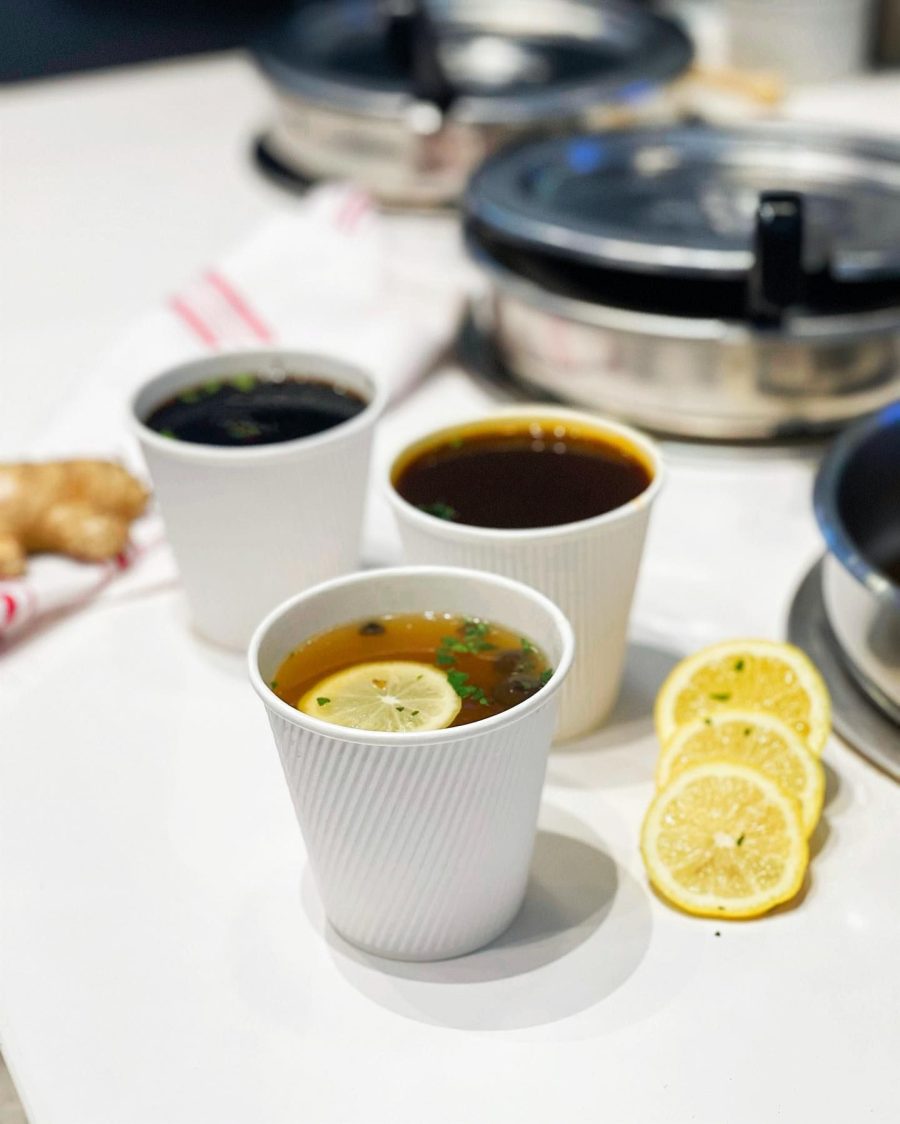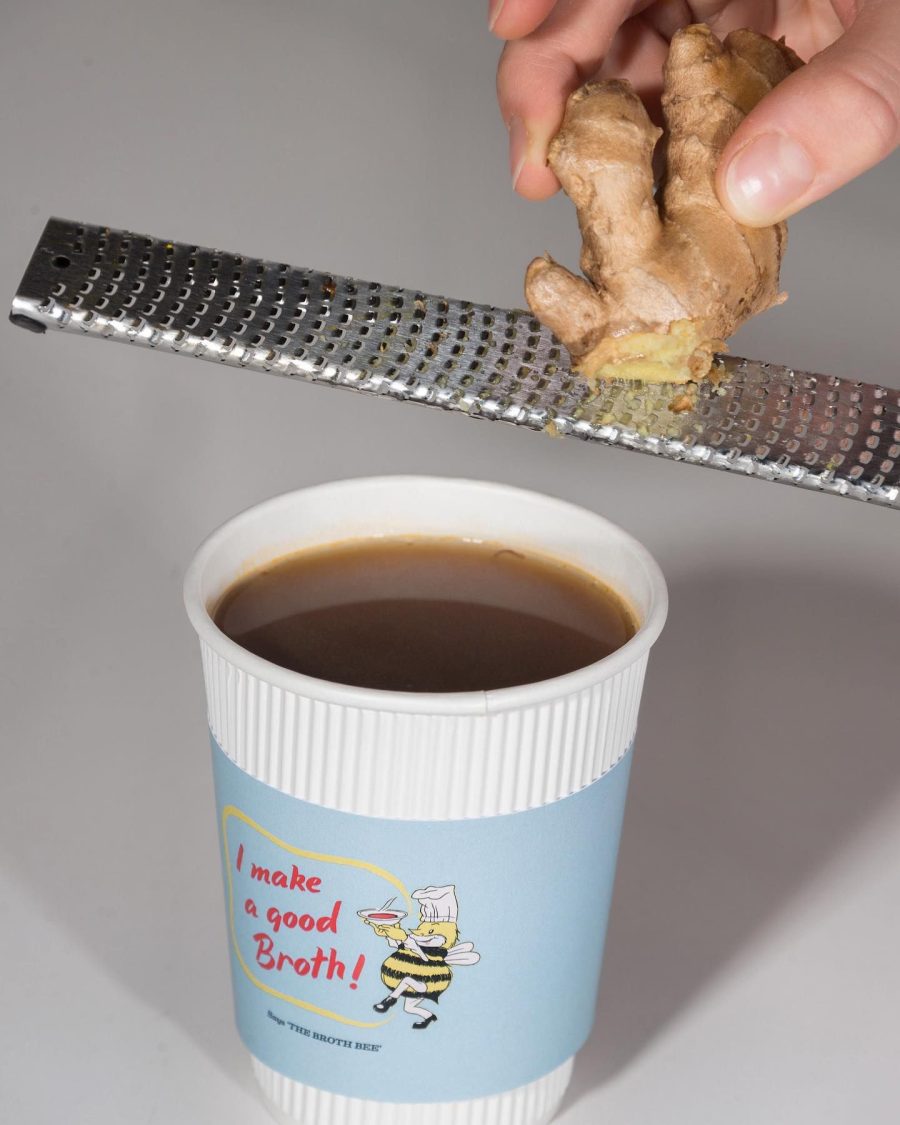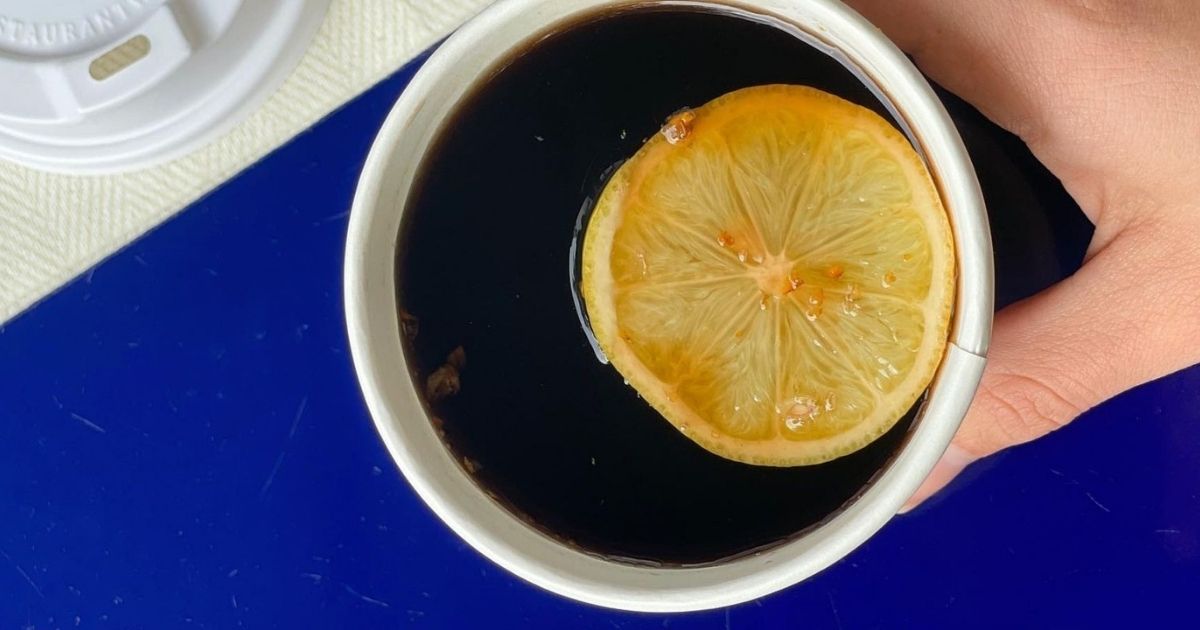Bone broth—the name alone sounds rich and nourishing. Long praised as a superfood to cure whatever ails you, the fortifying liquid packs a punch of both nutrients and flavors. Cultures across the globe deploy their own riffs on it—brodo in Italy, Vietnamese pho, American chicken broth. Some grocery stores carry prepackaged bone broth alongside stocks and other broths. One chef, however, is making it as easy to pick up and enjoy on-the-go as a smoothie or cold-pressed juice.
Harley Peet, the executive chef of Bluepoint Hospitality Group, introduced a line of three bone broths (beef, chicken, and vegetable) to Bumble Bee Juice café in Easton, Maryland. Similar to smoothies, these broths pack plenty of nutrients and minerals into a cup. Plus, they taste delicious sipped alone; their naturally low-calorie and low-sugar content make them a healthy and warming option for a winter day drink.
Peet considers every element that goes into these high-protein broths. He sources meats from all-natural, pasture-based farms and chooses particular bones that boost both the flavor and mineral content. The Local Palate caught up with Peet to learn about the benefits of bone broth and why it may be the most underutilized ingredient in our kitchens.

DEMYSTIFYING BONE BROTH WITH CHEF HARLEY PEET

The Local Palate: How do bone broths differ from something like chicken broth and other stocks? Should we use it differently than stocks?
Harley Peet: Bone broths are essentially a hybrid of broths and stocks. However, unlike stock, broths are delicious on their own as a beverage. Bone broths are also a super-ingredient: Any broth will enhance flavor in a dish, but bone broths especially improve the mouthfeel of a sauce thanks to the natural dissolved collagen and gelatin they contain.
TLP: People rave about bone broth for its health benefits, could you elaborate?
HP: Bone broth is prized for its many therapeutic properties, including improving joint mobility and muscle recovery, healing digestive issues, and reducing inflammation. The broths are also sugar-free, salt-free, gluten-free, and very low in calories.
TLP: You carefully consider which parts of the animal you use to make the bone broth—how do you choose which bones to use? Why do certain bones and joints matter more than others?
HP: Joint bones are especially beneficial for broth, being rich in cartilage and connective tissue that render out in the super-long cooking process. I value the properties of the knuckle bones for minerals and collagen and veal calves’ feet for their collagen-dense tendons.
TLP: Okay, so we’ve gotten bone broths (either purchased or made at home). What can we add to jazz them up?
HP: Healthy and tasty add-ins can really enhance the flavor. At Bumble Bee Juice, we offer everything from turmeric and chives to marinated mushrooms and grated parmesan for a rich umami boost.
TLP: Are you able to share more information on the process/methodology for making beef bone broth?
HP: Our beef bone broth owes its goodness to the bones of pasture-raised animals from nearby farms around the Eastern shore that practice ethical animal husbandry and environmental stewardship. We oven-roast the bones on both sides, covering them to promote the accumulation of juices, which are then strained and defatted, and reduced down to intensify the flavor as a broth base. Simmered low and slow over an extended period, the flavor and body are drawn fully into the hearty broth.

share
trending content
-
Recap: TLP x Charleston Wine + Food
by TLP Editors -
Exploring Mississippi: A Quintessential Southern Experience
-
Recipes From Our Summer Issue
by TLP Editors -
Elevate Your AWESOME with an Alpharetta Music Getaway
by TLP's Partners -
9 Noteworthy Tennessee Restaurants | Listen
by Margaret Littman
More From At the Table
-
High Tea, Southern Style
-
10 Leftover Recipes To Clean Out Your Fridge
-
Country Captain Shrimp and Grits
-
10 Nonalcoholic Drinks for Dry January
-
Our Most Popular Recipes of 2023





